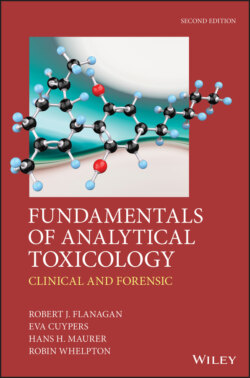Читать книгу Fundamentals of Analytical Toxicology - Robin Whelpton - Страница 55
2.3.2 Blood
ОглавлениеIn analytical toxicology, plasma or serum is normally used for quantitative assays, but some poisons such as carbon monoxide, cyanide and many other volatile organic compounds, lead and other toxic metals, and some drugs such as chlortalidone, are found primarily in or associated with erythrocytes. Thus, haemolyzed whole blood should be used for such measurements. The space above the blood in the tube (‘headspace’) should be minimized if carbon monoxide, solvents, or other volatiles are suspected.
Provided that the samples have been collected and stored correctly, there are usually no significant differences in the concentrations of poisons between plasma and serum. However, if a compound is not present to any extent within erythrocytes then using lysed whole blood will result in an approximately two-fold dilution of the specimen. A heparinized or EDTA whole blood sample will give either whole blood, or plasma as appropriate. The immunosuppressive drugs ciclosporin, everolimus, sirolimus, and tacrolimus are special cases because redistribution between plasma and erythrocytes begins once the sample has been collected and so the use of haemolyzed whole blood is indicated for the measurement of these compounds.
In addition to the obvious alteration in sample volume, careful interpretation of results is needed if solutions containing ascorbic acid (risk of loss of acid labile compounds, reduction of metabolites), sodium metabisulfite (reduction of metabolites), or sodium azide (interference in immunoassays) are added to specimens.
